New

Turn Your DMs Into Lead Gen!
Learn how to collect lead data from your DMs such as email addresses, phone numbers, and more right from your social inbox. If you are not yet automating your DMs your competitors are outpacing you.

How Something Social Saved 75% of Their Time and Increased Revenue by 15%
See how a fast-growing agency improved operations, cut down hours of manual work, and unlocked new revenue opportunities with Vista Social.
New

50 Unique Social Media Ideas for Consistent Content Creation
Discover 50 unique social media post ideas to engage your audience, grow your brand, and maintain a consistent content strategy with ease!

Mastering Content Reuse: The Key to a Consistent and Sustainable Posting Strategy
Published on September 23, 2025
7 min to read
Social Media Manager vs. Community Manager: Who Does What
Summarize with AI
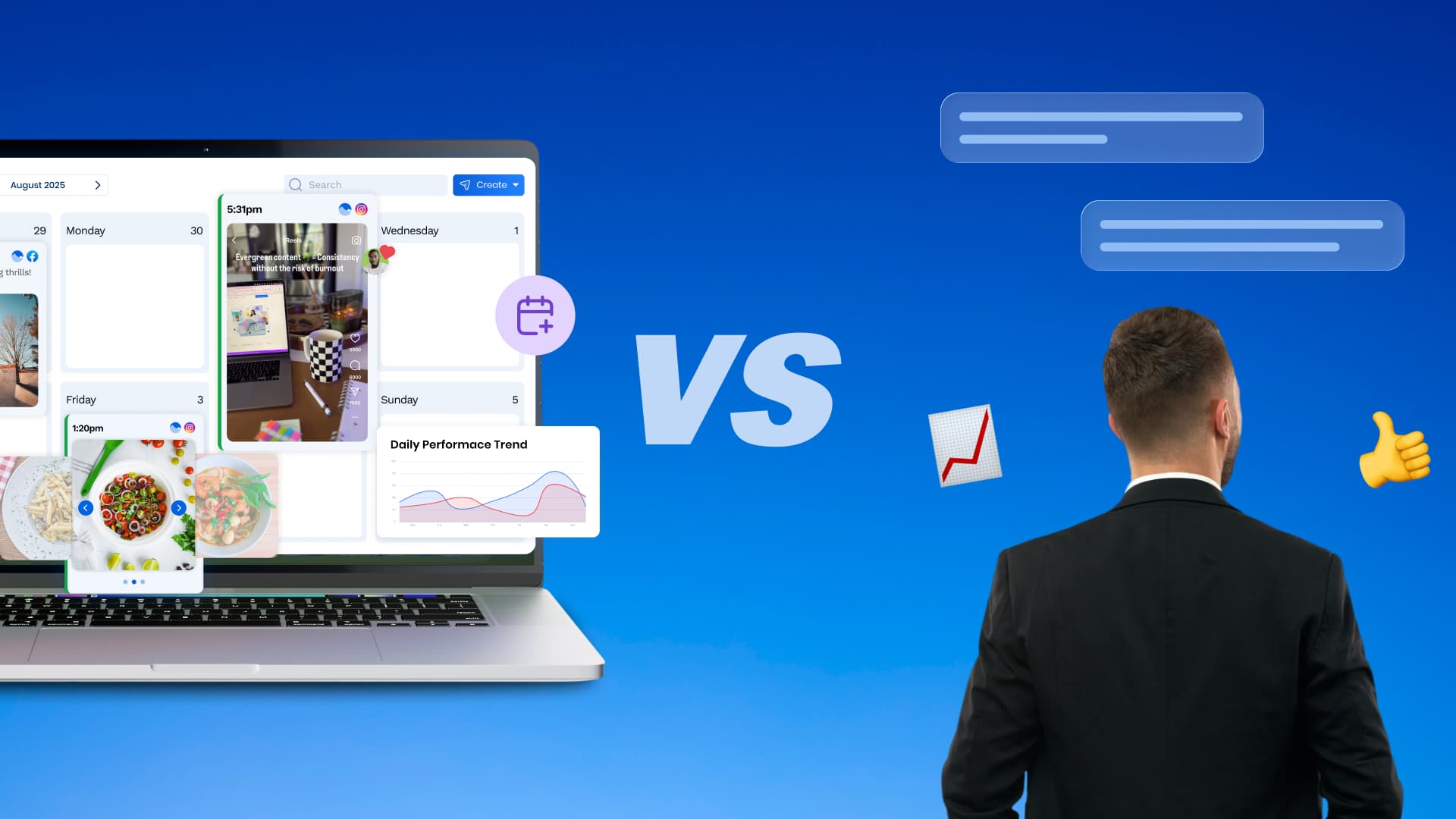

Table of Content

Have you ever noticed how the titles social media manager vs. community manager get tossed around like they’re the same job? Spoiler: they’re not.
Here’s the issue—social media keeps expanding, and so do the expectations on the people running it.
A recent survey shows that 66% of social media marketers feel weighed down with too many responsibilities, which makes sense when brands mix up who’s supposed to be managing content versus building community.
This article is here to clear things up.
We’ll break down the growing importance of digital roles, define what sets a social media manager apart from a community manager, highlight where their responsibilities overlap, and show you how brands can harness the power of both to maximize impact.
Table of contents
What is a social media manager?
A social media manager is the driving force behind a brand’s presence on social platforms. They act as a strategist, content creator, and analyst all at once, ensuring every post, campaign, and interaction reflects the brand’s identity.
A social media manager’s role goes beyond just posting updates—they focus on growing awareness, building relationships with audiences, and turning engagement into measurable results for the business.
By combining creativity with analytics, social media managers help brands stay relevant in fast-changing digital landscapes.
What does a social media manager do?
The role of a social media manager is both creative and analytical, requiring them to balance storytelling with performance metrics. Here’s a closer look at their key responsibilities:
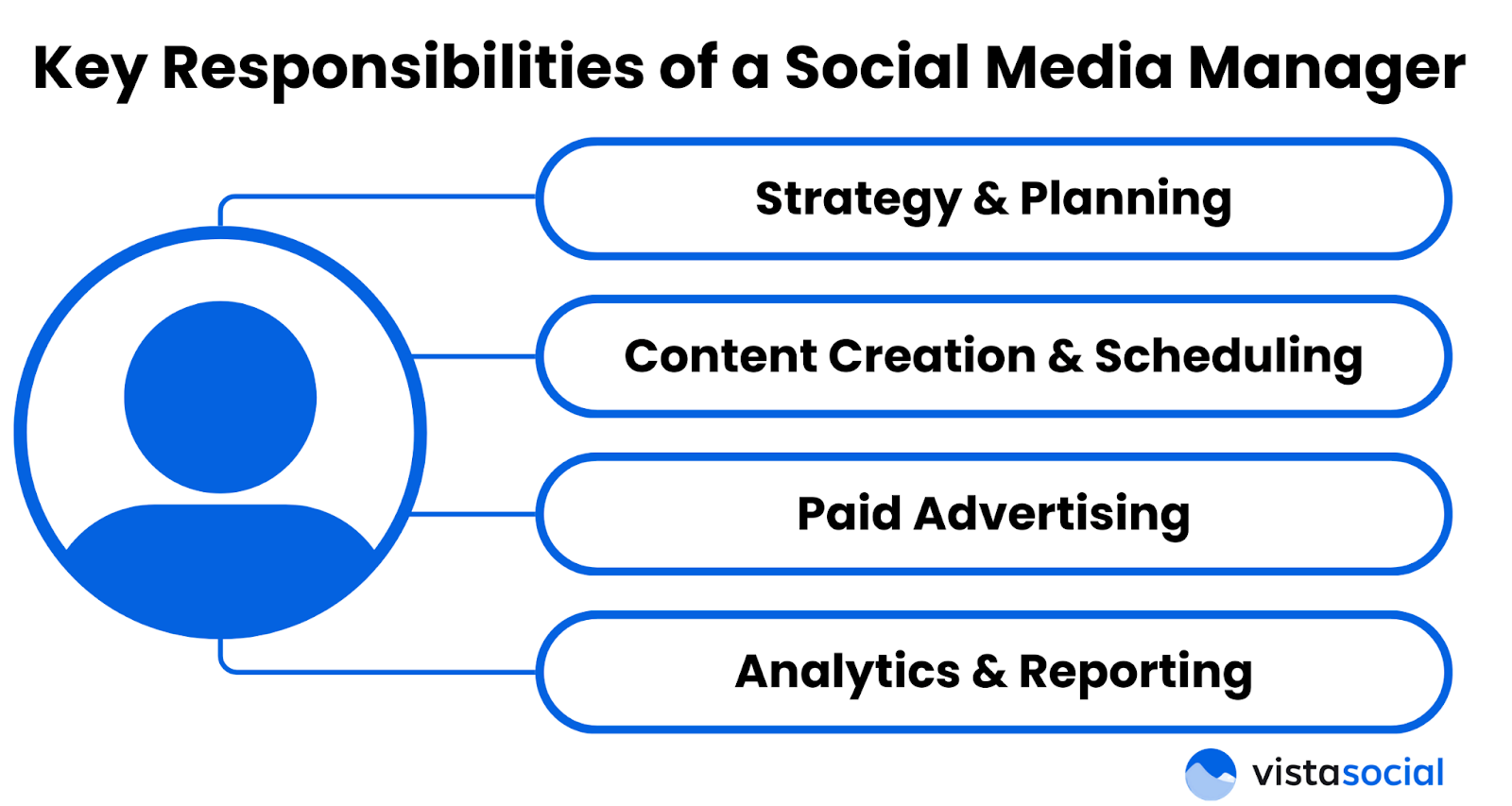
- Strategy & planning: Social media managers set the foundation by defining goals, identifying the target audience, and creating a roadmap for campaigns. This involves choosing the right platforms, setting KPIs, and ensuring strategies align with overall business objectives.
- Content creation & scheduling: SMMs produce and curate engaging content—from graphics and videos to captions and stories. They also use scheduling tools to plan content calendars, ensuring consistent posting at peak engagement times.
- Paid advertising: They design and manage ad campaigns across platforms like Facebook, Instagram, LinkedIn, or TikTok. By analyzing audience insights and testing creatives, they optimize budgets to get the highest return on investment.
- Analytics & reporting: Measuring success is essential. They track social media metrics such as reach, impressions, click-through rates, and ROI. These insights help refine strategies, identify trends, and prove the value of social efforts to stakeholders.
In short, a social media manager is the architect of a brand’s online strategy—blending creative content with data-driven planning to make sure the brand grows, engages, and achieves results.
What is a community manager?
A community manager is the relationship builder of a brand’s online presence. Unlike roles that center mainly on strategy or content creation, the community manager’s work is rooted in people and conversations. They serve as the friendly voice of the brand, ensuring that followers feel seen, valued, and included.
Their role is not just about answering comments—it’s about creating a thriving environment where customers feel like they belong and are part of something bigger than just a transaction. At the heart of their work is fostering engagement, building trust, and turning passive audiences into active brand advocates.
What does a community manager do?
A community manager wears many hats, but all of them tie back to one goal: strengthening connections between the brand and its audience.
Their responsibilities go far beyond chatting with followers; they also manage community culture, encourage participation, and provide valuable feedback to help the brand grow.
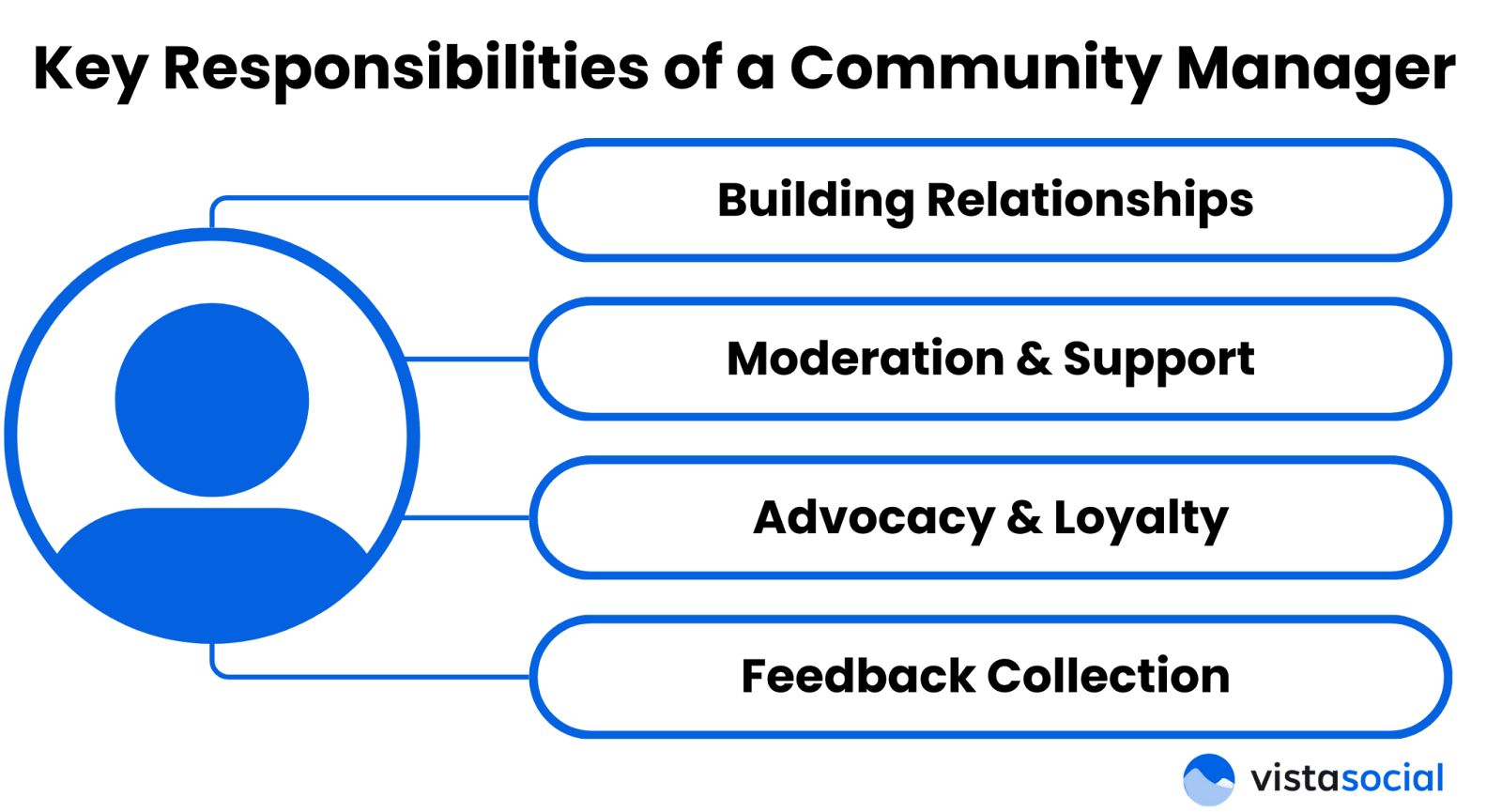
- Building relationships: Community managers engage in genuine conversations with followers, customers, and fans. They reply to comments, start discussions, and make individuals feel like they matter. This personal touch builds trust and helps transform one-time buyers into long-term supporters.
- Moderation & support: Communities thrive on respect and order, and it’s the community manager’s job to maintain that. They moderate discussions, handle negative comments or complaints with professionalism, and provide timely support. By doing this, they ensure the community stays safe, welcoming, and productive.
- Advocacy & loyalty: A strong community doesn’t just follow a brand—it champions it. Community managers nurture this advocacy by highlighting user-generated content, celebrating milestones, and recognizing loyal members. This not only strengthens loyalty but also inspires others to get more involved.
- Feedback collection: Community managers act as the brand’s listening post. They observe trends in conversations, track what people love (or don’t love), and share those insights with product, marketing, and customer service teams. This makes them an important bridge between the community and the company, ensuring customer voices shape future improvements.
In short, community managers are storytellers, listeners, and connectors. They build the emotional foundation that turns customers into a real community—a powerful force that drives both brand growth and customer satisfaction.
Must Read: 8 Community Management Tools to Engage With Your Audience
Similarities and differences of social media managers and community managers
When it comes to social media manager vs community manager, the main difference is clear.
A social media manager handles strategy, publishing, and analytics, making sure the brand’s message is sharp, visible, and reaching the right people at the right time. They look at big-picture goals, plan campaigns, and track performance to prove ROI.
A community manager, on the other hand, focuses on building relationships and driving engagement starting conversations, responding to comments, and making followers feel connected and valued.
Simply put: one spreads the message, while the other nurtures the community that keeps the brand alive.
Despite their differences, social media managers and community managers share some overlapping responsibilities:
- Keeping brand voice consistent across all platforms so messaging feels authentic
- Watching conversations to track mentions, feedback, customer needs, and trends
- Backing up campaigns by aligning with strategies that push growth and awareness
- Taking charge of crisis management to protect reputation and respond quickly to issues
Must Read: Crisis Management on Social Media: Best Practices for Brands
Try Vista Social for Free
A social media management platform that actually helps you grow with easy-to-use content planning, scheduling, engagement and analytics tools.
Get Started NowWhile their day-to-day tasks may look different, both roles need unique skills to succeed. Here’s a quick comparison of what each one brings to the table:
Social Media Manager Skills
- Analytics and performance tracking: Tracks engagement, reach, and conversions to see what works best. Uses insights to improve future campaigns and prove ROI.
- Strategy planning and execution: Creates content calendars and campaign plans aligned with brand goals. Ensures posting consistency and adapts to trends for maximum impact.
- Ad management and budget handling: Runs paid ads across platforms to boost visibility and reach the right audience. Manages budgets efficiently to maximize results with minimal costs.
- Content creation and curation: Designs posts, videos, and graphics that fit the brand’s style. Curates user-generated content to keep messaging authentic and relatable.
Community Manager Skills
- Empathy and active listening: Understands followers’ needs by paying close attention to feedback. Responds thoughtfully to make people feel heard and valued.
- Strong communication skills: Crafts clear, friendly, and on-brand messages that connect with audiences. Encourages conversations that build stronger community ties.
- Moderation of online communities: Keeps online spaces safe by removing spam and harmful content. Enforces guidelines so discussions stay positive and respectful.
- Conflict resolution abilities: Handles complaints and negative feedback with patience and professionalism. Turns potential conflicts into opportunities to build trust.
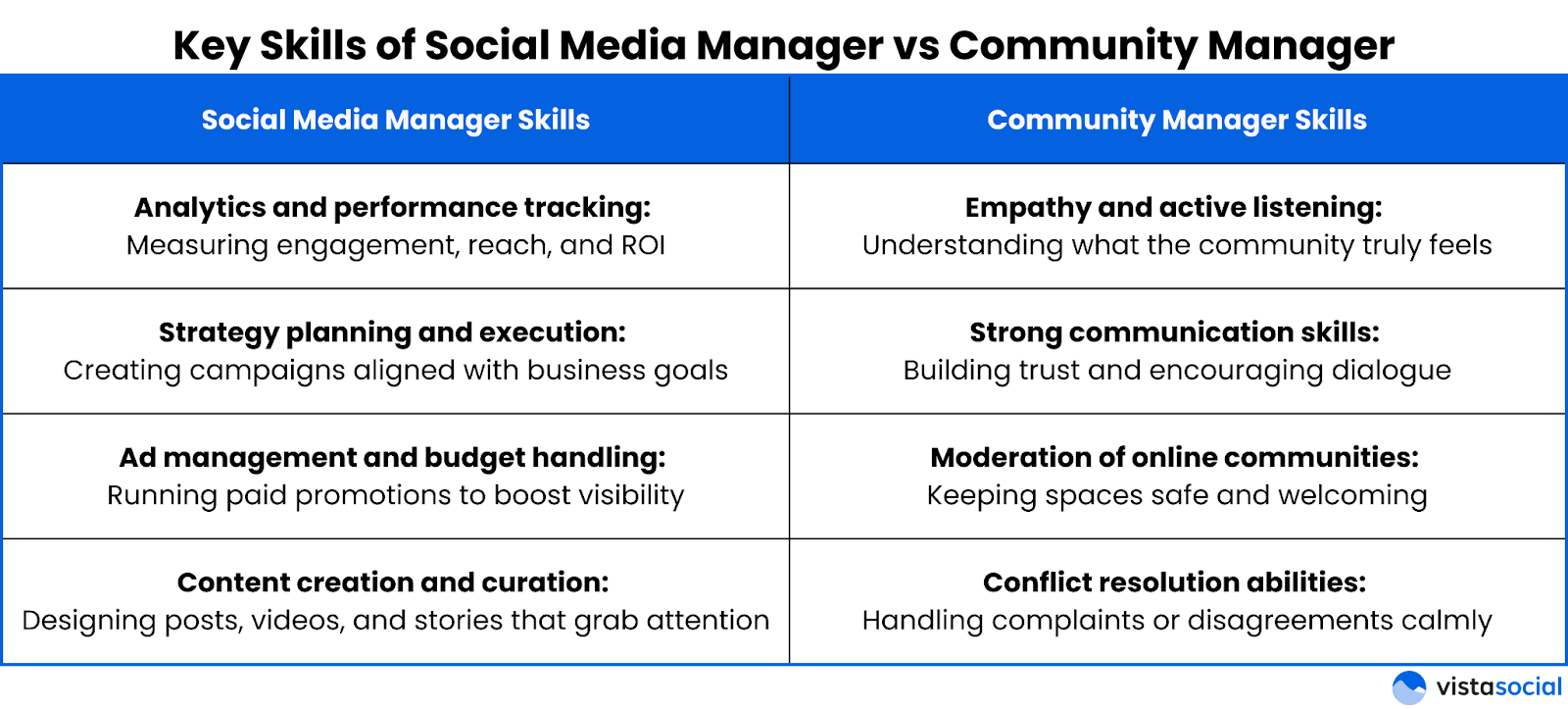
Which role does your business need?
Deciding between a social media manager vs. community manager really comes down to where your business is right now and where you want it to go.
A small business may not need two separate roles—one person can manage both strategy and community engagement if resources are limited. But as your brand grows, separating the roles can unlock more impact, efficiency, and stronger connections with your audience.
Key things to consider before making the call:
- Budget: Smaller budgets may require a hybrid role, while established companies can invest in separate positions
- Team size: Lean teams benefit from multitasking, but larger teams thrive with role specialization
- Campaign goals: If you want to grow reach and brand awareness, prioritize a social media manager, customer loyalty and engagement are your main goals, a community manager will add more value
In short, it’s not always a question of social media manager vs. community manager—it’s about timing and priorities.
Most businesses start with one person handling both responsibilities, then evolve into having separate specialists as the brand grows. Together, these roles create a balance of strategy and connection, ensuring that your brand not only reaches people but also keeps them engaged and loyal over time.
Making the most of both roles
The talk about social media manager vs. community manager can be confusing, but the truth is both roles matter a lot in today’s online world.
A social media manager makes sure your brand gets seen through smart planning, creative content, and campaigns built on data. On the other hand, a community manager keeps your audience close by starting conversations, answering questions, and building trust.
One focuses on reach and visibility, while the other drives connection and loyalty.
When businesses see the value of both, they stop treating them as competing roles and start using them as a team.
Together, they create balance—pushing your brand to grow while also keeping your audience engaged and cared for. This mix is what sets apart brands that just show up online from brands that actually stand out and succeed.
The best part is, tools like Vista Social make it simple for both roles to work hand in hand. From planning and scheduling posts to tracking results and managing conversations in real time, Vista Social makes the process smooth and stress-free.
This lets both managers focus on what they do best—growing your brand and building a strong, loyal community.
Social media manager vs. community manager FAQs
Can one person be both a social media manager and a community manager?
Yes! In startups or smaller businesses, one person often wears both hats. But it’s not easy—being a social media manager means focusing on strategy, content planning, and analytics, while being a community manager means building strong connections and keeping conversations alive. Balancing both can be tough, but it’s doable.
Which role is more important for startups?
For new businesses, community managers are key because they create trust and build loyal relationships from the start. As the business grows, social media managers step in to boost brand visibility, run campaigns, and scale the audience. Both roles matter—it’s just about timing and business stage.
Do community managers need to create content?
Yes, but not in the same way as social media managers. Their main job is to engage with people and keep the community active. Still, they often create or share content that keeps conversations going and makes members feel heard.
How do these roles collaborate with marketing teams?
Social media managers handle the big-picture marketing strategy: campaigns, content calendars, and analytics. Community managers bring in real feedback from users—what people like, dislike, and talk about. Together, they create a cycle where marketing shapes the message, and community insights fine-tune it.
How does AI affect social media managers vs. community managers?
AI is changing both roles. For social media managers, it automates scheduling, creates quick content, and tracks results faster. For community managers, AI helps moderate conversations and personalize interactions. But here’s the catch: while AI is powerful, nothing replaces the human touch when it comes to genuine engagement.
About the Author
Content Writer
Content writer and copywriter with over 2 years of experience, specializing in VSL scriptwriting. I’ve worked with various brands to create compelling content. Passionate about storytelling that connects and converts. Loves cats, poetry, and skincare
Read with AI
Save time reading this article using your favorite AI tool
Summarize with AI
Never Miss a Trend
Our newsletter is packed with the hottest posts and latest news in social media.
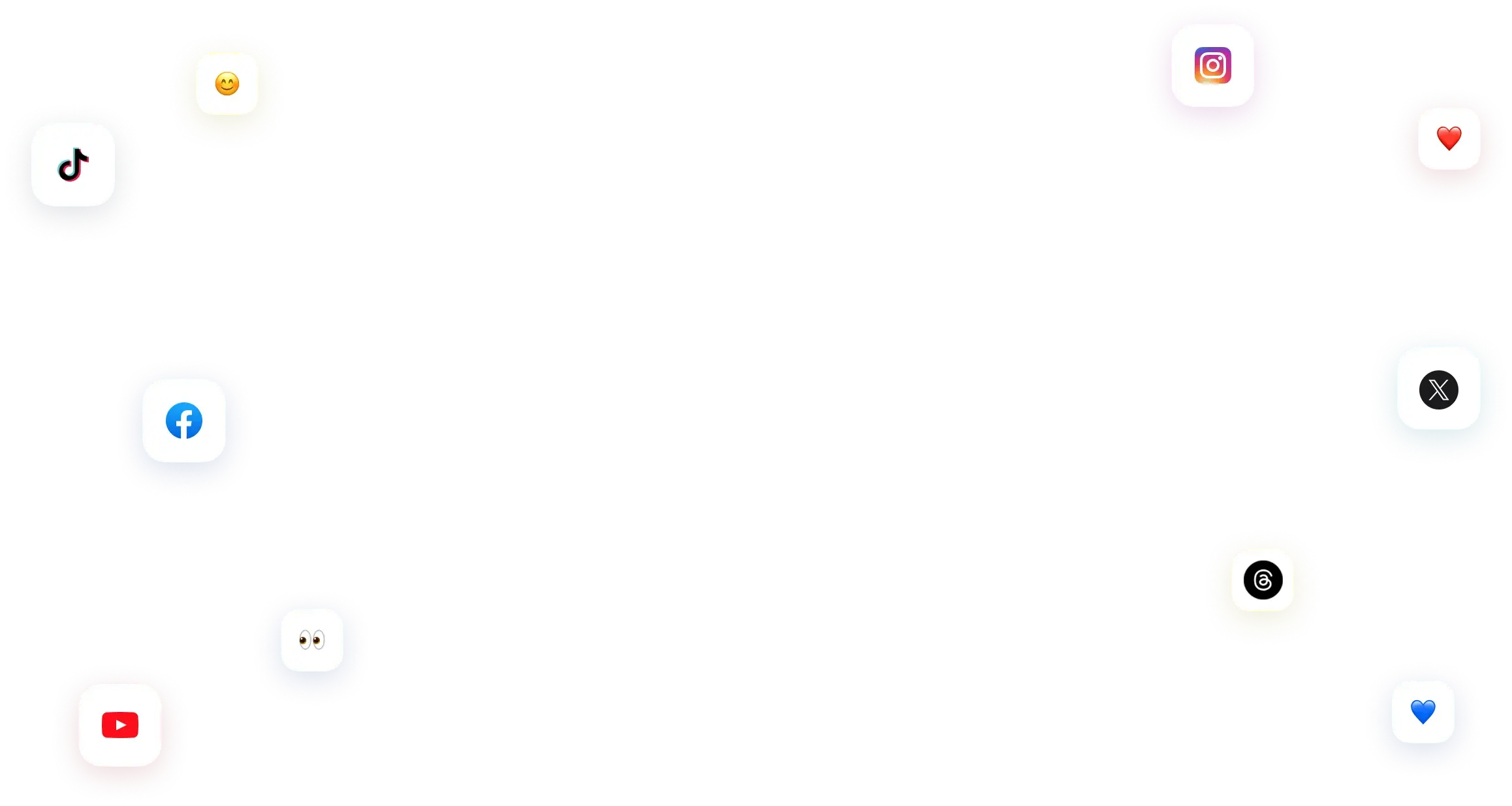
You have many things to do.
Let us help you with social media.
Use our free plan to build momentum for your social media presence.
Or skip ahead and try our paid plan to scale your social media efforts.
P.S. It will be a piece of cake 🍰 with Vista Social
Subscribe to our Newsletter!
To stay updated on the latest and greatest Social Media news. We promise not to spam you!


